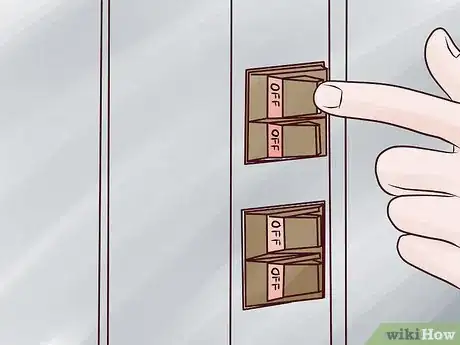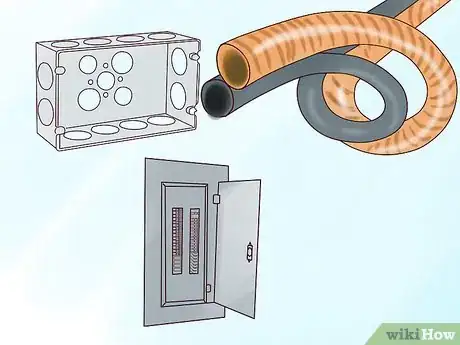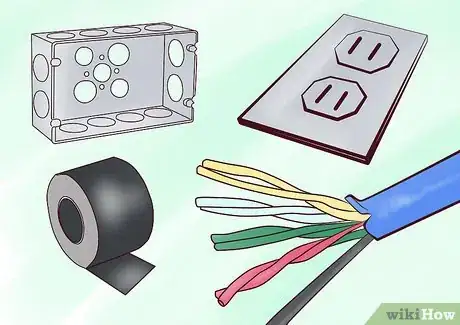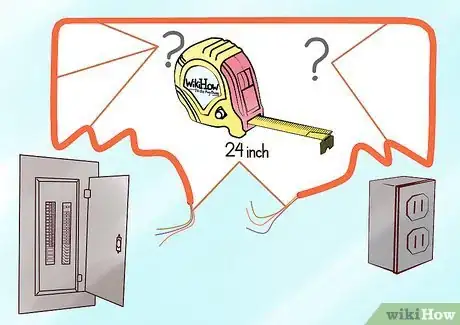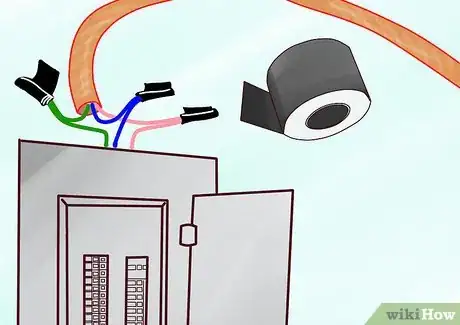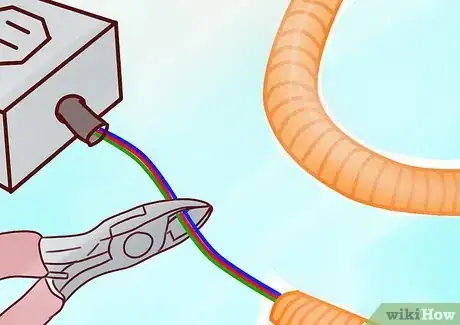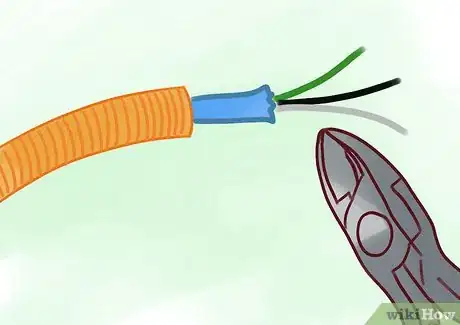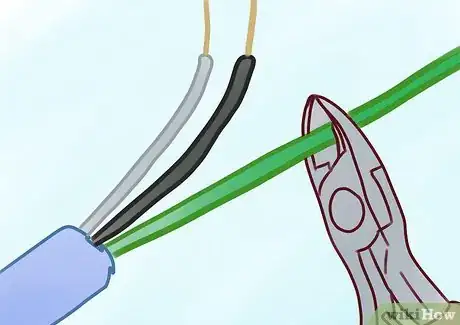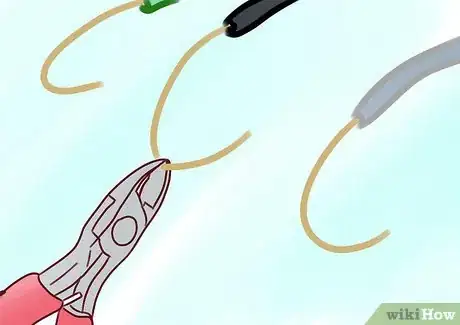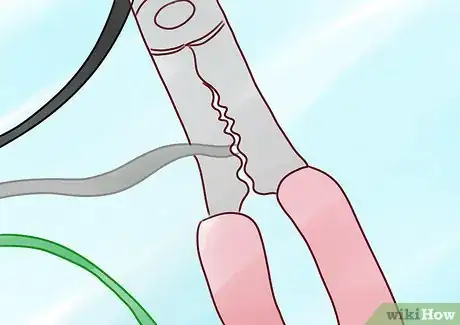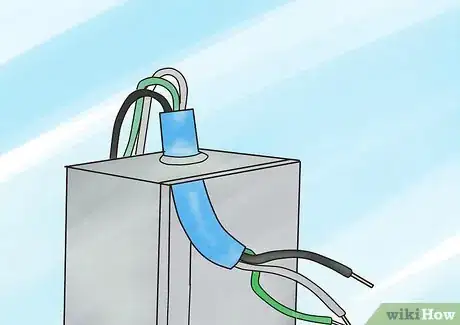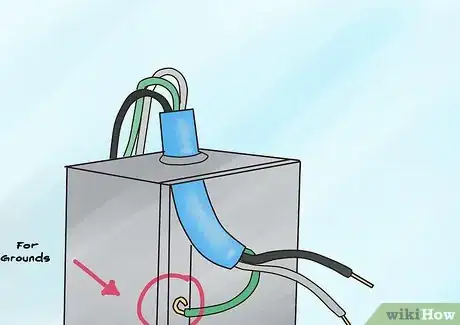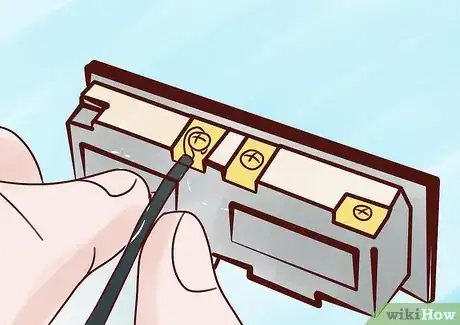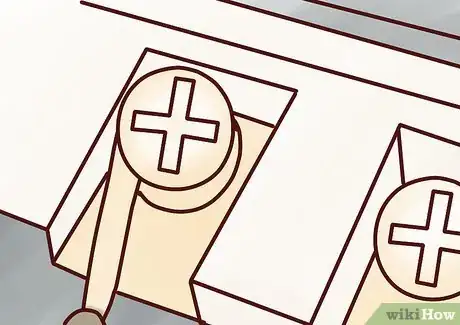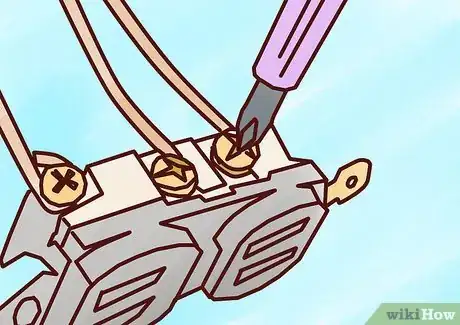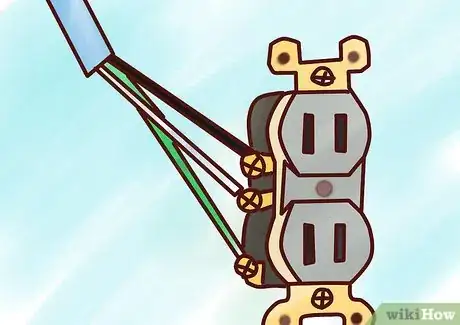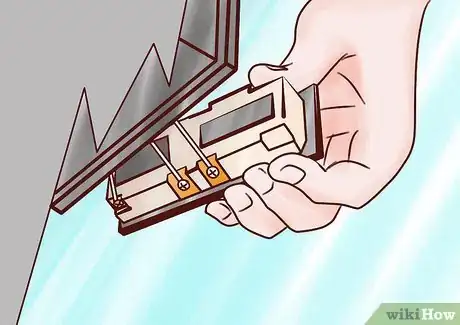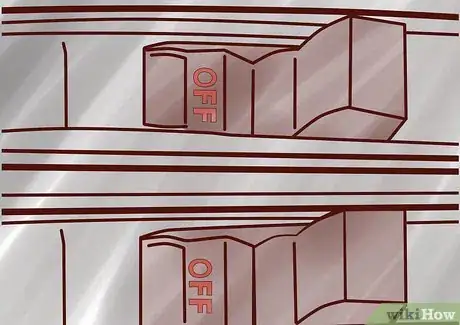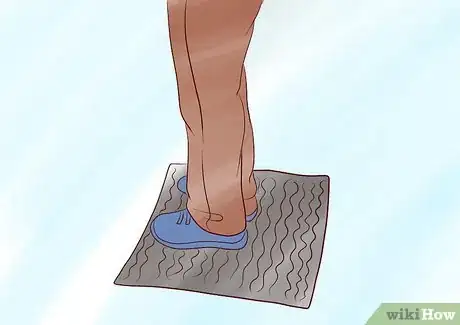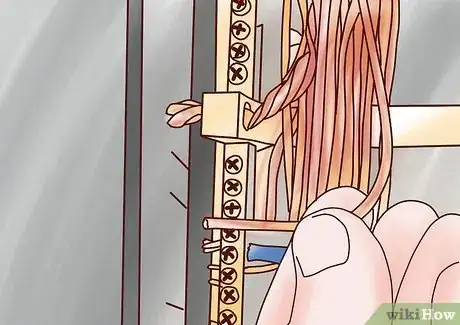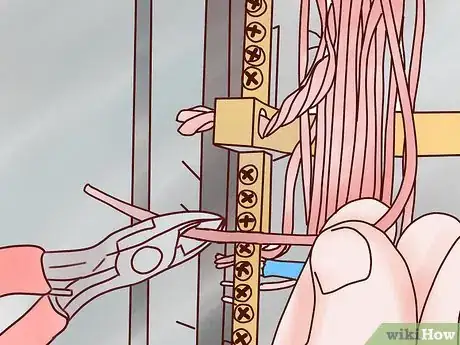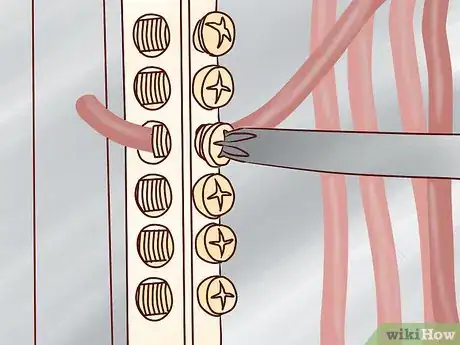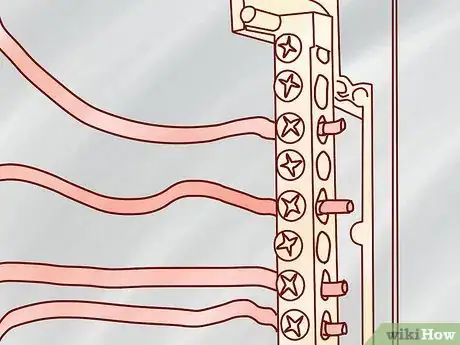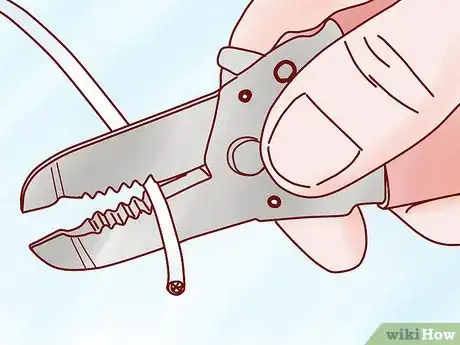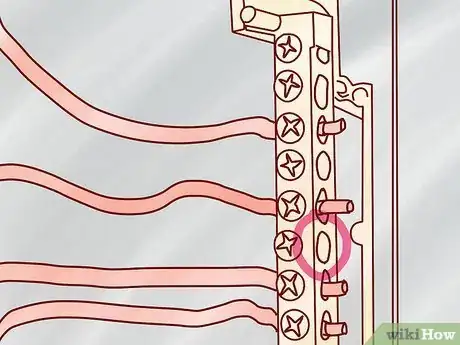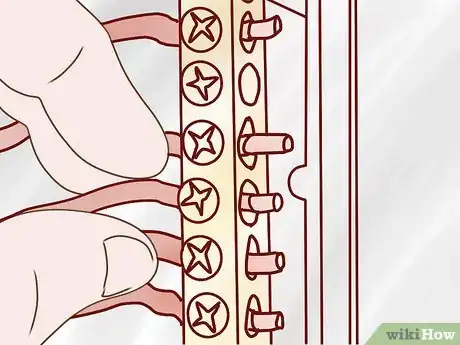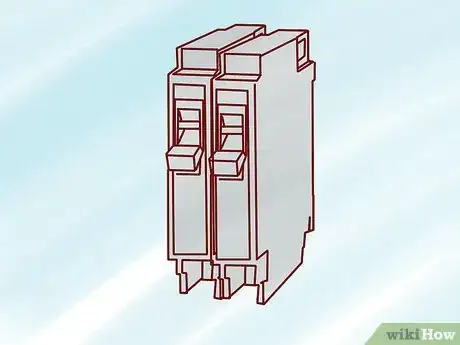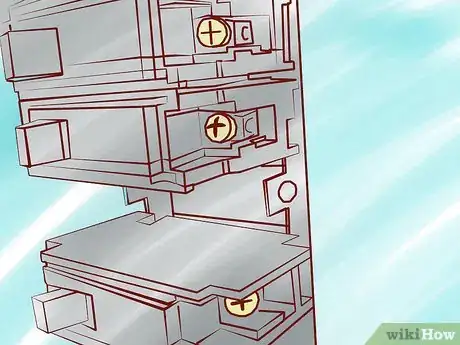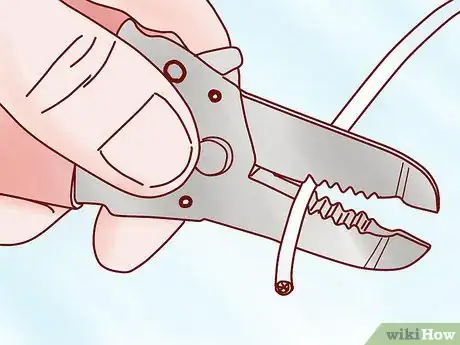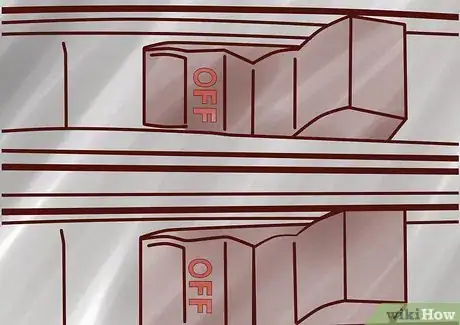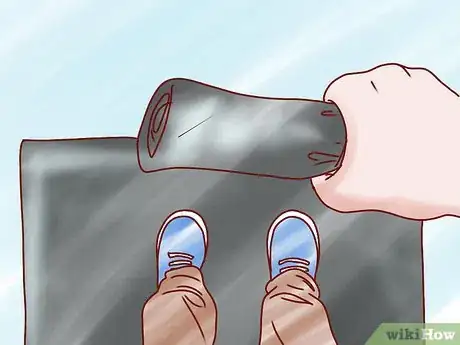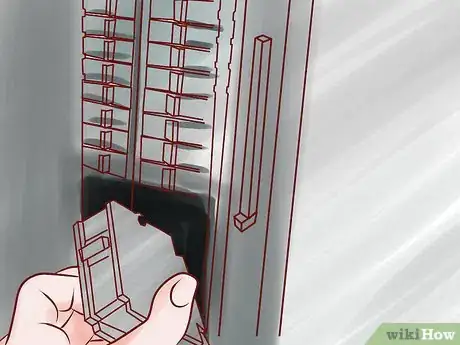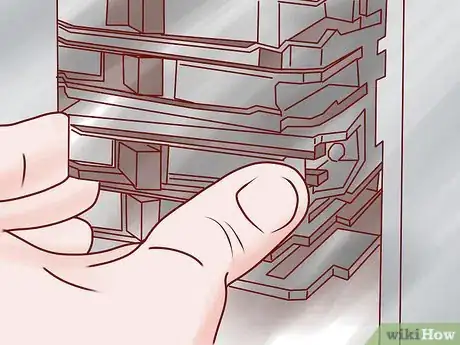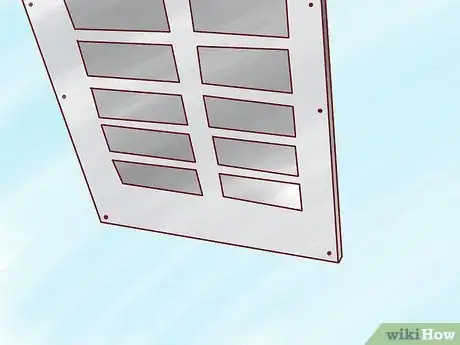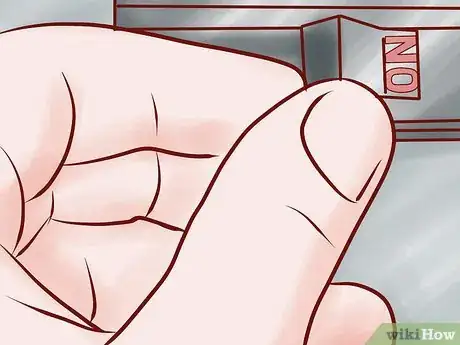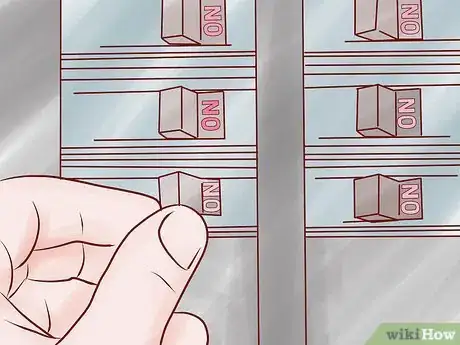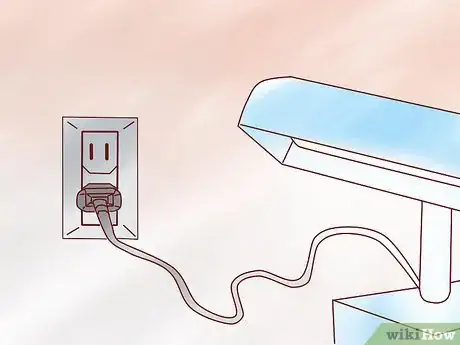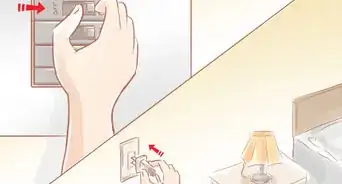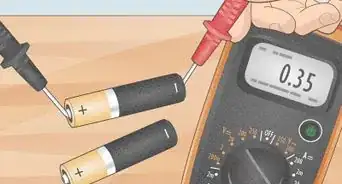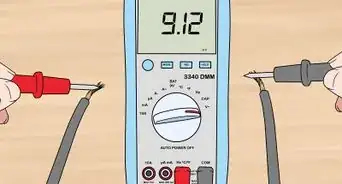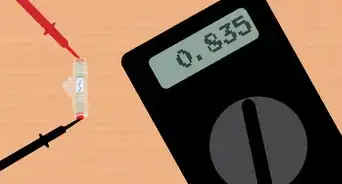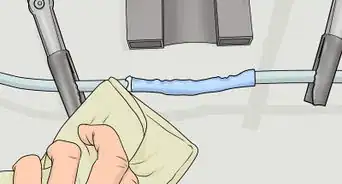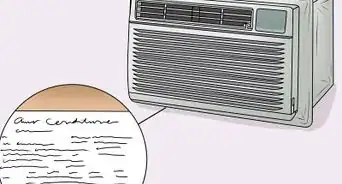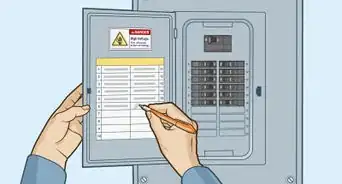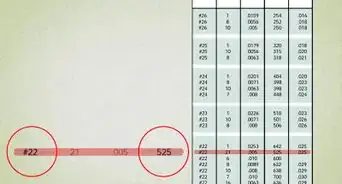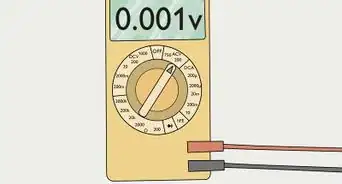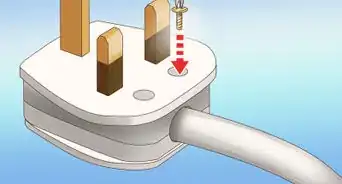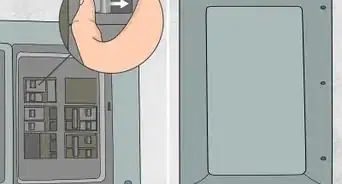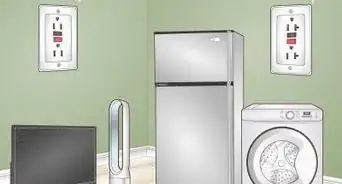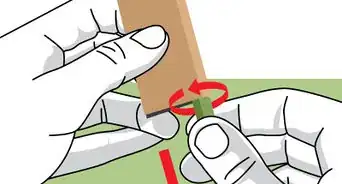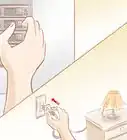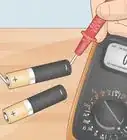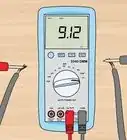This article was co-authored by Ricardo Mitchell. Ricardo Mitchell is the CEO of CN Coterie, a fully licensed and insured Lead EPA (Environmental Protection Agency) Certified construction company located in Manhattan, New York. CN Coterie specializes in full home renovation, electrical, plumbing, carpentry, cabinetry, furniture restoration, OATH/ECB (Office of Administrative Trials and Hearings/Environmental Control Board) violations removal, and DOB (Department of Buildings) violations removal. Ricardo has over 10 years of electrical and construction experience and his partners have over 30 years of relevant experience.
There are 9 references cited in this article, which can be found at the bottom of the page.
This article has been viewed 528,645 times.
Hiring an electrician is usually the best way to go where 120 volt circuits are concerned, but if you are up to it, you might save money by doing some basic electrical work yourself. This article covers the steps for installing a simple 15A (15ampere) circuit with one receptacle.
Steps
-
1Turn off the power feeding the panel you are going to be working in. It may help to take a few minutes to familiarize yourself with all of the tips in the related wikiHow article on "How to Master Do It Yourself Electrical Safety". Shut off all the individual circuit breakers in the panel and then shut off the main switch that supplies power to the panel. This is preferable as it is much safer to operate many smaller current devices, one at a time; than to operate a single, large current device just once. When all the smaller circuit breakers are off, the amount of current flowing through the larger 50, 100 (or more) amp circuit breaker should be zero.[1]
-
2This wikiHow is about wiring a simple electrical circuit. It doesn't cover the following information, which may vary depending on the type of installation you are doing, and the type of existing wiring you may be connecting to.
- Choosing and installing electrical boxes.
- Selecting and installing conduit.
- Upgrading an existing electrical panel box to accommodate a new circuit.
Advertisement -
3Look at the following requirements that must be considered before proceeding with this project. These are beyond the scope of this article, so these items should be addressed before starting.
- You will need to get and install the receptacle (junction) box. For flush installation in a drywall wall, you may choose a cut in or repair type, for other installations, a surface mounted cast aluminum or PVC weather resistant (damp location) box may be applicable.
- You will need to determine the path for the wires between the receptacle box and the electrical panel box.
- You will need to install conduit if you use single insulated wires.
- Install the actual wires if you use a non-metallic cable (Romex).
-
4Measure the distance from the electrical panel box to the location your new outlet will be installed, following the path you have selected, and trying to determine the actual distance the wire must run. Allow a little extra for corners, especially if you are installing in conduit, since these have ride radius curves for turning sharp angles. Also, allow at least 24 inches for hooking the wires to the breaker or fuse block and neutral and ground terminals in the panel box, and 6 or 8 inches for terminating in the receptacle box.[2]
-
5Feed the wires through the conduit from the receptacle box. Put a couple of pieces of electrical tape over the end of your wires, so the copper is not exposed. This way, if your wire touches an exposed live conductor while feeding it through, it won't short out or conduct the current back to you.[3]
- If you have installed conduit and the run is very short, you may be able to just push the wire from the outlet box back through to the electric panel.
- For long runs, you may need to push a "fish tape" through the conduit so you can hook onto the wire and pull it through.
- If you don't have conduit, you will have to "fish" the cable or remove wallboard and possibly drill 5/8 inch or larger holes through the wall studs to feed the wire through.
- Either way, you have to get the wire run between the electric panel and the outlet box in a way that it is not exposed and the insulating "jacket" is not damaged.
-
6Cut the wire to length so that 20cm (8") sticks out of the outlet box, and about 80cm (30") sticks out at the electrical panel.[4]
-
7Cut about 15cm (6") of the (usually yellow or gray) outer jacket away from the wire, being careful to not damage the inner black or white jackets. This usually leaves one bare copper or green wire (the ground wire), one black wire (the hot wire) and one white wire (the neutral wire).[5]
-
8Strip about 1.5 cm (5/8") of the insulation away from the end of both the black and white wires. If you have wire strippers, simply clamp the insulated wire in the slot that matches the size of your wire, turn the strippers half a turn to score the insulation, and pull the wire through.[6] This will remove the insulation without damaging the copper conductor inside it.[7]
- If you can't strip the jacket, use the "14 gauge" jaws. Using the 12 gauge jaws of the tool significantly decreases the chance of nicking the wire. When using the 14 gauge jaws, hold the tool at a right angle to the wire, otherwise you will damage the wire. Also strip the end of the ground wire if it is insulated. If you cut too deep, don't worry... Cut the end off and try again. You have 3 or 4 tries before the wires will start to get too short to work with. It is very important to NOT nick the wire.
-
9Use the needle nose pliers to form a small hook at the exposed copper ends of all the wires to attach to the terminals on your receptacle if you are not going to feed additions devices through this outlet. Otherwise, cut 8" pieces of black, white and bare / green wires from the unused portion of the roll to be used as "pigtails".[8]
-
10Carefully strip both ends of the pigtails as outlined above. Gather all of the "hot" wires (black or red usually) and the 8" black pigtail. Twist them together and spin a properly sized wire nut securely over the top. No exposed copper should be seen extending from the insulating cover of the wire nut.[9]
-
11Fold the group towards the back of the box, with the pigtail sticking out to the front of the box. Use the needle nose pliers to form a small hook the exposed copper end of pigtail. This lone black wire represents the bundle of blacks, and will be easier to work with than a whole bundle of wires.[10]
-
12Repeat this procedure for the remaining wires. If you have a metal box, you'll need to cut an extra bare / green wire pigtail to ground the box.
-
13Look at the outlet. On the side of the outlet, you will see screws. The screws will be darker on one side than the other, usually, brass for the dark side, and silver for the lighter side. On the back of the outlet, you will see 2 or 4 sets of small round holes near the screws. These are the "quick connect" points.[11]
- NOTE: You can use either the wiring screws or the quick connects. However, the screws are the preferred method as they provide a better contact between the wires and the outlet. Also, if you fail to strip enough wire for the quick connect, the wire can work itself loose over time causing all the outlets downstream to fail.
-
14Wrap the hook you made on the wires around the screw terminals of the outlet. Doing this provides a significantly superior connection compared to back-wiring, and most electricians use this technique on their own houses because of it. If you insist on back-wiring, insert the tip of the black wire into one of the holes nearest the dark screws and push it in as far as it will go. You may need to use the needle nose pliers to push the wire in, as these can be really stiff sometimes. The wire should go nearly the full 1.5 cm (5/8") in. Repeat this with the white wire into a hole near the lighter colored screws.[12]
-
15Look on one end of the outlet for a green screw. Put the hook you made in the ground wire clockwise around the green screw. Tighten the screw until it is secure. This connection must be tight.[13]
-
16That completes wiring of the outlet end of the circuit.
-
17Gently push all the wires back into the electrical box, screw the outlet into place, and put the cover on it.
-
18Go to the electric panel. Make sure you double-check that the power is turned off. Still, it is a good idea to treat all exposed wires and conductive metal as though it is live (energized, or hot).[14]
-
19Put the rubber mat down and stand on it while you do your work, and bend the wires out away from the panel while preparing them, so that your hands are not working close to potentially live circuits.[15]
-
20Locate the neutral / grounding bus bar. This is a long bar with many screw terminals with existing uninsulated and green insulated (ground) wires terminated to it and often times will have white wires terminated to it as well. Most properties with only one electrical panel has a single such bus bar (as described above) for the termination of both ground and neutral wires. Most properties that have more than one electrical panel (a second panel for a detached garage or dedicated shop area; or provided during expansion of or addition to a home - are common scenarios), are required to have a bus bar for the termination of ground wires and a separate bus bar for the termination of neutral wires. Suffice to say, if the panel has one bar used to terminate only white wires and another bus bar used to terminate only green or / and bare wires, it is very important to maintain the integrity of these two systems by adding ground wires only to the ground bus bar and neutral wires only to the neutral bus bar. Failure to do so is a code violation and a potential shock hazard.[16]
-
21Cut the ground wire to length so that it comfortably reaches the grounding post after following a path out of the way of other wires, typically following right-angles across the bottom of the panel and up to the grounding post. Don't cut it too short, but don't leave too much slack either. If the ground wire has a green jacket, strip 1.5cm (5/8") of the jacket from the end of the wire.
-
22Find an unused terminal on this grounding bar, unscrew it part way, insert the ground wire, and then tighten the screw back down onto the exposed copper until the wire is secure. Place only one wire per terminal. Do not over tighten and crush the conductor under the screw.
-
23Locate the neutral bar if there is one. This is similar to the grounding post, except that it will have only white wires hooked into it. In many cases, the neutral bar and ground bar are the same. If this is the case, both the ground wire and the white neutral wire may be terminated to the same grounding bar.[17]
-
24Cut the white neutral wire to length, then strip 1.5cm (5/8") of the jacket off and bind it to the neutral binding post the same way as you did for the ground wire. Place only one wire per terminal. Do not over tighten and crush the conductor under the screw.[18]
-
25Locate the open slot in the electrical panel that you want to install this circuit into. Note that there is a "hot" conductive bar that sticks out on one side, and a plastic or grounded metal tab on the other (depending on panel manufacturer).
-
26Being careful to not touch anything conductive, determine the length of wire needed to reach this slot easily, also following a path around the outside of the panel. Cut the wire to length.
-
27Check or select a circuit breaker suitable for the task and panel. The panel cover will provide a list of circuit breakers models that have been tested with and are approved for use in the panel by an independent test facility such as UL (Underwriters Labs), FM (Factory Mutual), etc.. Under no circumstances should any circuit breaker that does not appear on this list be installed into the panel - regardless if it fits; or not. Circuit breakers made by Square D, Murray, ITE, Sylvania, Westinghouse, etc. are to be installed in panels made by the same breaker manufacturer. Do not make the mistake of trying to install a Square D (or other manufacturer) circuit breaker into a different manufacturer's panel.[19]
-
28Locate the single binding screw on the new circuit breaker. Don't put the breaker in place yet, but take a look at how there is a slot for the tab in the panel to fit into, and there is another slot where the conductive bar will fit.
-
29Strip 1.5cm (5/8") of the end of the black wire, insert it into the breaker, and bind it securely to the breaker.
-
30Make sure that your new breaker is switched off.
-
31Standing on the rubber mat, place one hand at your side or behind your back... This is not a tasteless joke, but is actually a safety measure. Working with two hands is dangerous because if you ever touch anything that is hot, current can run in one arm, through your heart, and back out the other arm. One hand is all you need, so keep the other out of the way.
-
32Using your remaining hand, slide the slot in the breaker over the tab in the electrical panel.
-
33Then firmly push the other end of the breaker in over the electrical contact until it is seated in line with the other breakers.
-
34Locate the place on the panel cover where this new breaker needs to be exposed. There is very likely a metal tab that needs to be broken out of the panel so the new breaker can stick out from it. Break out this metal tab and put the cover back on the panel.
-
35Restore power to the panel. Reverse the order of the shut down procedure in the first step by turning the main breaker back on. This large current switch has no load on it and will be less stressful on it as a result. Continue restoring power to the circuits by moving remaining circuit breaker handles to the on position, one at a time. Hold off on turning the new circuit on for last. Once all the other circuits have been restored, check that all the original electrical circuits & devices are functioning once again. If any breaker immediately trips, it probably indicates that you created a short circuit. In this case, you will need to either shut all the power off and carefully inspect the panel and / or other work to find it; or call in an electrician.
-
36Turn the new circuit on. If it immediately trips, you will need to recheck your work and connections.
-
37Plug a lamp into your new circuit to test it. Odds are that it will now work just as it should. Smile because you just saved yourself $300 or more!
Community Q&A
-
QuestionHow do I go from one outlet to another?
 Community AnswerThis is known as a daisy-chain connection. Normally, a receptacle has five screws with one (green) as the ground. The two screws on the same side as the ground screw are the neutrals (whites). The two screws on the opposite side are for the hot (blacks). Both sets are bridged, and normally only one is required for each source hot/neutral screw. The spare hot/neutral screws are utilized for daisy chaining power to another location-receptacle. Only one wire should be connected per screw. If more connections are needed, a junction box should be utilized.
Community AnswerThis is known as a daisy-chain connection. Normally, a receptacle has five screws with one (green) as the ground. The two screws on the same side as the ground screw are the neutrals (whites). The two screws on the opposite side are for the hot (blacks). Both sets are bridged, and normally only one is required for each source hot/neutral screw. The spare hot/neutral screws are utilized for daisy chaining power to another location-receptacle. Only one wire should be connected per screw. If more connections are needed, a junction box should be utilized. -
QuestionDo black wires always connect to the breakers at all times?
 Community AnswerYes. By code and in general practice, they do. Electrical code and convention is black wire is hot, white is neutral, green is ground.
Community AnswerYes. By code and in general practice, they do. Electrical code and convention is black wire is hot, white is neutral, green is ground. -
QuestionHow do I install a 120v single pole switch when the light box has power to it?
 Community AnswerChange fixture to desired style and connect the neutrals (white) and (ground) wires (bare or green). Run a two-conductor wire to a switch in a desired location and install electrical box with switch. Mark the extension wires with colored tape to identify switch wires (both ends). Connect the marked-white wire to the black lead going to light. Wait to connect the marked-black wire going to switch to hot (black) last. Wire switch to extension wire you ran to the switch terminals. It doesn't really matter which wire goes to the terminals, but normally the hot (black) wire will be on the bottom and white on top. Now connect the marked-black to hot black wire feeding AC power.
Community AnswerChange fixture to desired style and connect the neutrals (white) and (ground) wires (bare or green). Run a two-conductor wire to a switch in a desired location and install electrical box with switch. Mark the extension wires with colored tape to identify switch wires (both ends). Connect the marked-white wire to the black lead going to light. Wait to connect the marked-black wire going to switch to hot (black) last. Wire switch to extension wire you ran to the switch terminals. It doesn't really matter which wire goes to the terminals, but normally the hot (black) wire will be on the bottom and white on top. Now connect the marked-black to hot black wire feeding AC power.
Warnings
- Inside an electrical panel, EVEN WHEN THE MAIN BREAKER IS OFF, deadly high voltage currents can be exposed. This is true by design in many cases, so DO NOT assume you are safe just because you have a new well maintained panel.⧼thumbs_response⧽
- Do not use 20 amp breakers with #14 gauge or smaller wire. This creates a fire hazard as #14 is rated for 15 amps max.⧼thumbs_response⧽
- If you aren't fully aware of the safety requirements of electrical work, don't do this. Mistakes are literally deadly in this kind of work.⧼thumbs_response⧽
- Do not use 15 amp breakers with 20 amp outlets. 20 Amp outlets look different than 15 amp outlets, and use of a 20 amp outlet indicates to future users that there are 20 amps of power available. This will not be true with a 15 amp breaker (this applies in commercial and industrial buildings only as residential buildings do not need 20 amp outlets even if on 20 amp circuits).⧼thumbs_response⧽
- If you see red or black wires clamped to the grounding post or to the neutral binding post, DO NOT PROCEED. This indicates non-standard and potentially dangerous existing wiring. It is best to close the panel back up and hire a professional electrician to advise you on it or do the work.⧼thumbs_response⧽
Things You'll Need
- A 15 Amp circuit breaker
- 14 gauge "2-wire with ground" wire of sufficient length to reach where you want the outlet
- A 15 amp rated electrical outlet
- An installed outlet box, ready for the outlet and wire
- A path, whether in conduit or other approved method for the wire to run from the box back to an electrical panel
- One open slot in the electrical panel for the new circuit to be installed
- Wire strippers
- Needle nose pliers
- For long runs, electrical "fish-tape" may be required
- Rubber soled shoes, ideally with a rubber floor mat.
References
- ↑ https://www.esfi.org/resource/do-it-yourself-diy-electrical-safety-216
- ↑ https://www.familyhandyman.com/project/add-electrical-outlet/
- ↑ https://www.familyhandyman.com/electrical/wiring/tips-for-easier-electrical-wiring/
- ↑ https://www.familyhandyman.com/project/add-electrical-outlet/
- ↑ https://www.familyhandyman.com/project/add-electrical-outlet/
- ↑ Ricardo Mitchell. Electrician & Construction Professional, CN Coterie. Expert Interview. 6 May 2020.
- ↑ https://www.familyhandyman.com/electrical/wiring-outlets/add-electrical-outlet/
- ↑ https://www.familyhandyman.com/electrical/wiring/tips-for-easier-electrical-wiring/
- ↑ https://www.familyhandyman.com/electrical/wiring/tips-for-easier-electrical-wiring/
- ↑ https://www.familyhandyman.com/electrical/wiring/tips-for-easier-electrical-wiring/
- ↑ https://www.familyhandyman.com/electrical/wiring-outlets/add-electrical-outlet/
- ↑ https://www.familyhandyman.com/electrical/wiring/tips-for-easier-electrical-wiring/
- ↑ https://www.homedepot.com/c/ah/how-to-add-an-outdoor-outlet/9ba683603be9fa5395fab905e702719
- ↑ https://www.esfi.org/resource/do-it-yourself-diy-electrical-safety-216
- ↑ https://www.esv.vic.gov.au/safety-education/electrical-safety-at-home/using-electricity-safely/
- ↑ https://mrelectric.com/blog/electrical-wire-color-codes
- ↑ https://www.youtube.com/watch?v=A5OHrf_l3b8
- ↑ https://www.youtube.com/watch?v=A5OHrf_l3b8
- ↑ https://www.youtube.com/watch?v=A5OHrf_l3b8
